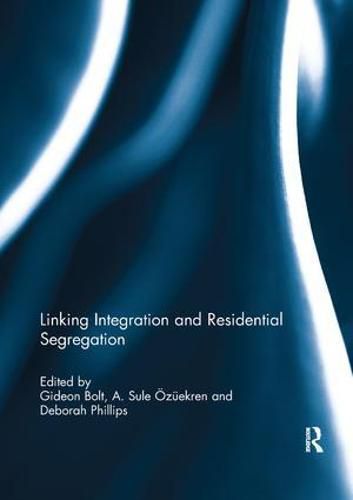Readings Newsletter
Become a Readings Member to make your shopping experience even easier.
Sign in or sign up for free!
You’re not far away from qualifying for FREE standard shipping within Australia
You’ve qualified for FREE standard shipping within Australia
The cart is loading…






Policy-makers tend to view the residential segregation of minority ethnic groups in a negative light as it is seen as an obstacle to their integration. In the literature on neighbourhood effects, the residential concentration of minorities is seen as a major impediment to their social mobility and acculturation, while the literature on residential segregation emphasises the opposite causal direction, by focusing on the effect of integration on levels of (de-)segregation.
This volume, however, indicates that the link between integration and segregation is much less straightforward than is often depicted in academic literature and policy discourses. Based on research in a wide variety of western countries, it can be concluded that the process of assimilation into the housing market is highly complex and differs between and within ethnic groups. The integration pathway not only depends on the characteristics of migrants themselves, but also on the reactions of the institutions and the population of the receiving society. Linking Integration and Residential Segregation exposes the link between integration and segregation as a two-way relationship involving the minority ethnic groups and the host society, highlighting the importance of historical and geographical context for social and spatial outcomes.
This book was originally published as a special issue of the Journal of Ethnic and Migration Studies.
$9.00 standard shipping within Australia
FREE standard shipping within Australia for orders over $100.00
Express & International shipping calculated at checkout
Policy-makers tend to view the residential segregation of minority ethnic groups in a negative light as it is seen as an obstacle to their integration. In the literature on neighbourhood effects, the residential concentration of minorities is seen as a major impediment to their social mobility and acculturation, while the literature on residential segregation emphasises the opposite causal direction, by focusing on the effect of integration on levels of (de-)segregation.
This volume, however, indicates that the link between integration and segregation is much less straightforward than is often depicted in academic literature and policy discourses. Based on research in a wide variety of western countries, it can be concluded that the process of assimilation into the housing market is highly complex and differs between and within ethnic groups. The integration pathway not only depends on the characteristics of migrants themselves, but also on the reactions of the institutions and the population of the receiving society. Linking Integration and Residential Segregation exposes the link between integration and segregation as a two-way relationship involving the minority ethnic groups and the host society, highlighting the importance of historical and geographical context for social and spatial outcomes.
This book was originally published as a special issue of the Journal of Ethnic and Migration Studies.